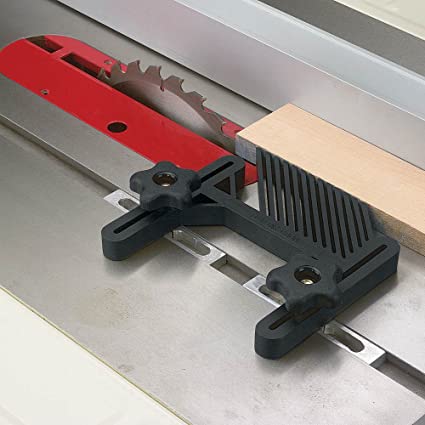Jacob
What goes around comes around.
Some overthinking going on here!
I've been using two standard push sticks for years now and it's become second nature.
Instead of thinking about it I'd strongly recommend just doing it until it becomes natural and easy.
Not only safer but also gives much better control of the workpiece.
They aren't expensive but I make copies in ply so that they are always around. Can be modified to hold down thin stuff etc. May be accidentally modified if you get too near the saw, but that's the whole idea - you can hold tight close to the blades without risking your fingers.

PS I use two push sticks just about every time on TS or planer. There are occasions when you don't need to - big pieces where you hands are well away.
I've been using two standard push sticks for years now and it's become second nature.
Instead of thinking about it I'd strongly recommend just doing it until it becomes natural and easy.
Not only safer but also gives much better control of the workpiece.
They aren't expensive but I make copies in ply so that they are always around. Can be modified to hold down thin stuff etc. May be accidentally modified if you get too near the saw, but that's the whole idea - you can hold tight close to the blades without risking your fingers.

PS I use two push sticks just about every time on TS or planer. There are occasions when you don't need to - big pieces where you hands are well away.


































